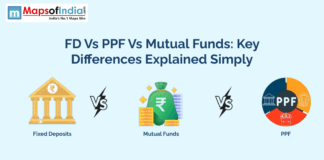Trading on the share market could take many forms; some entail buying and selling stocks in the immediate term, while others entail long-term commitments. There are two modes of operation, or techniques of trading in the stock markets, depending on which side you’re aiming at: intraday trading or delivery-based trading.
Intraday investing is purchasing and selling equities during the same business day. Delivery trading requires a more vital goal of investing than merely looking for trading possibilities, in contrast to intraday trading.
The investors intend to keep their equity investments for longer, which explains this. At the same time, intraday trading permits lower capital balances and buffer payments, and delivery trading mandates total amounts for each transaction.
Intraday buying and selling: What is it?
- Intraday trading is purchasing and selling equities during the same business day.
- In this process, stocks are bought with a profit-making goal rather than an investing one.
- This is accomplished by utilising the trends in the market indices, which implies that fluctuating stock prices are used to generate profits from stock trading.
- An electronic investing account should be set up with special orders related to intraday trading to engage in intraday trading. Well before the trading day is through, these orders are settled.
Positive Aspects of intraday trading
- The trader needs a small capital investment since payments may be executed on small margins.
- The investor can use funds as leverage to profit as much as possible.
- It removes the stocks’ overnight risks.
Negative Aspects of intraday trading
- Long-term capital investments don’t exist.
- Leverage usage has the potential to increase losses.
- Since deals close at the close of the day, the trader must pay continual attention.
Delivery Investing: What is it?
- Among the most popular trading strategies on the stock market is delivery trading. Delivery trading requires a stronger goal of investing than merely looking for trading prospects, in contrast to intraday trading.
- The investors intend to keep their company shares for a longer length of time, which explains this.
- There aren’t any time restrictions throughout this procedure for selling stocks. It is regarded as a delivery deal as much as the shares are transferred to the related Demat accounts.
- Since your equities will be kept in a Demat account, you cannot conduct delivery transactions without one.
Positive aspects of delivery trading
- The sale of stocks is not time-limited
- With the equity owner earning all the incentives the firm distributes, it offers simple bonus earnings regarding dividends, bonus releases, rights issues, etc.
- The investor’s earnings are significantly increased due to the more significant returns given to the proprietor through dividends and bonuses from the firm.
- Short selling carries no risk. Lending shares to sell on the market and then purchasing them back before the trading day is through is known as short selling.
Negative aspects of delivery trading
Complete advance payouts: If the buyer cannot pay the total transaction value upfront, trading cannot occur. As a result, a lack of finances might cause an investor to miss out on a fantastic opportunity.





